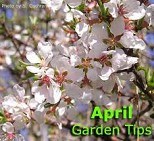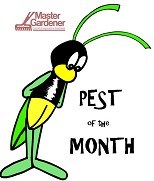No doubt you’ve heard the term ‘waterwise gardening’ as it applies to water conservation. You might even be using waterwise practices: mulching, irrigating with soaker hoses and drip systems, catching irrigation water in rain barrels and selecting drought tolerant plants. But what about waterwise gardening as it relates to bodies of water? Garden practices that permit fertilizers, pesticides and soil particles to enter water resources and planting invasive species can wreak havoc. Poor gardening practices threaten drinking water supplies. They impact wildlife health and habitat. They destroy recreational opportunities on the water.
Certain landscaping activities, if undertaken near wetlands or bodies of water, may be subject to state and local wetland protection laws. But government regulation is not the only way to safeguard water. You can engage in waterwise gardening practices that benefit water resources such as wetlands, ponds, lakes, streams, rivers, bays and groundwater.
Control Sedimentation and Encourage Infiltration
Soil particles, as well as fertilizer and pesticide residues, can make their way into water bodies through runoff of stormwater, melting snow and overwatering. These sediments reduce sunlight reaching underwater plants, clog fish gills and fill in habitats as they settle out. Turbid, sediment-filled water is not likely to be used for recreational activities such as swimming and fishing. Take stock of your yard to find and remedy potential sources of sediment pollution.
By reducing the presence of bare soil, particularly on sloping land, you can limit the amount of soil being lost through runoff. Restore bare patches in the yard as soon as possible and cover exposed soil in planting beds with mulch. If you are having trouble establishing vegetation on slopes, investigate the possibility of creating terraces or research ground covers suitable for your site conditions.
You can also control sediment and chemical residue leaving your yard by reducing the amount of water runoff in general. Compacted soil, impervious surfaces such as concrete driveways and paths and steep slopes all contribute to rapid runoff. Loosen compacted soil by digging or tilling and work in organic matter to improve drainage. Plant trees and shrubs, whose deep roots will allow water to penetrate soil better than shallow-rooted turfgrass. Rain gardens, shallow depressions planted with deep-rooted woody and herbaceous species and buffer plantings of native species between manicured yards and water resources are also effective at capturing and filtering runoff. Consider using permeable hardscaping materials, such as gravel or porous pavers for driveways and wood chips for paths.
Reduce Fertilizer and Pesticide Pollution
Fertilizers excessively applied to gardens can end up in ground and surface waters. These surplus nutrients contaminate drinking water and contribute to rapid growth of algae in water bodies which in turn robs aquatic life of oxygen and light. Herbicides, insecticides, fungicides and other pesticides also pose a threat to clean drinking water and aquatic organisms if improperly applied. With a little planning and a new perspective on what makes a garden beautiful, you can address pesticide and fertilizer pollution.
Practice ‘right plant, right place’ to reduce the need for pesticides. Plants growing in the appropriate soil, moisture and light conditions are better at withstanding pest and disease attacks than plants that are stressed. Frequent strolls through the garden will help you spot pest and weed problems early. Hand pick or spot treat to pre-empt large scale pesticide applications and develop an arsenal of environmentally friendly products like Neem and B.t. to use when necessary, especially near wetlands and open water (always read product labels!). Consider your yard’s topography when applying any pesticides. Sloping areas will move pesticides in surface water more rapidly than flatter sites or sites that are heavily vegetated. Pay attention to weather forecasts. If rainy or windy weather is predicted, use common sense and delay pesticide applications.
Water contamination arising from fertilizer misuse can also be avoided if you employ common sense. Use a soil test to determine nutrient deficiencies in garden soil and apply fertilizer, lime (which changes soil Ph to affect nutrient availability) and organic matter according to test recommendations. Turn to compost and slow-release fertilizers to provide nutrients whenever possible.
Compost offers the added benefit of moisture retention and slow-release fertilizers are less likely to leach into groundwater than soluble or granular fertilizers. Apply fertilizers mindfully. Avoid spilling them on driveways or other surfaces where they may pollute runoff and postpone fertilizing if a rainstorm is expected. If you have a wetland, pond, stream or other water resource on your property, keep high maintenance gardens at a distance from it (local laws may influence landscaping activities within 100 feet of a wetland and within 200 feet of a river or year-round stream).
Select Non-Invasive Plants
So what’s the connection between invasive plants and water pollution? Consider the example of common buckthorn, a non-native introduced to North America as an ornamental shrub. The plant is now an invasive that grows throughout much of the United States and Canada. Its canopy provides a deep shade under which groundcovers cannot survive. When surface runoff passes over the bare soil underneath buckthorn plants, it picks up soil particles that make their way into water resources. And, as we battle expanding populations of invasives like buckthorn in our yards, we use increasing amounts of herbicides, some of which make their way into surface and ground water.
Make informed choices when purchasing or accepting plants for your garden. Native plants preserve a sense of place, provide wildlife food and habitat and ornamental selections abound. Remember too, that there are plenty of well-behaved introduced ornamentals, selected for pest and disease resistance and their ability to perform with little water or fertilizer once established.
Source: Garden Clippings, (Volume 31, Number 3) May 2011





